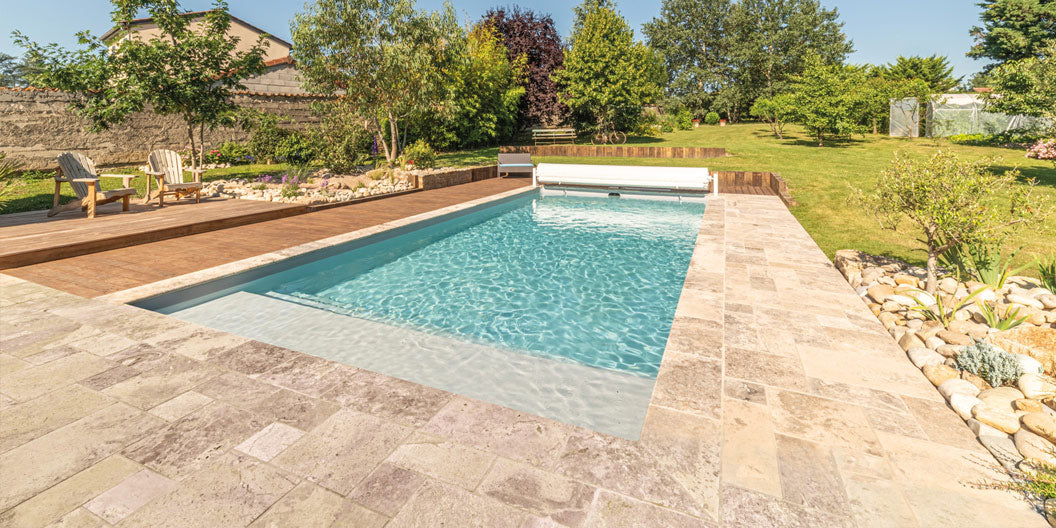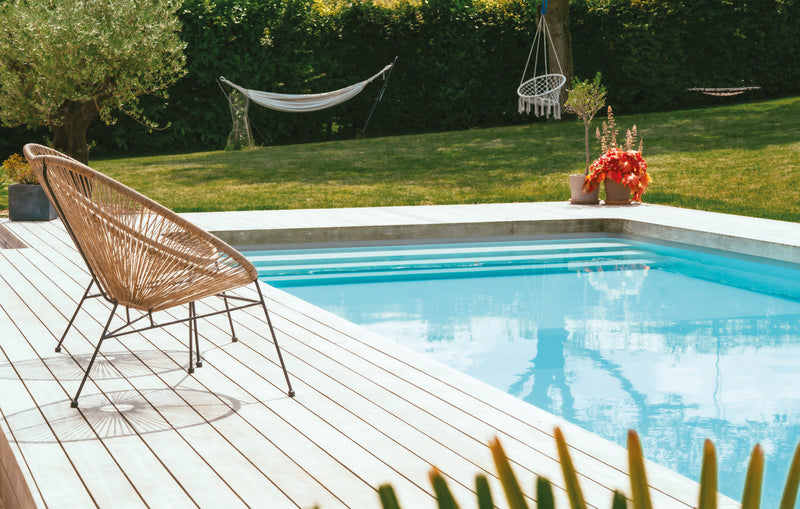- Welcome
- Desjoyaux advice
- fr_FR
-
What materials should you choose for your coping stones?
What materials should you choose for your coping stones?
Posté leEssential for the pool, both for their aesthetic appeal and functionality, coping stones form the edge of the pool. They are available in a variety of materials, colors, heights, and sizes.

What is the function of the coping stones?
Positioned on the pool wall, the coping stones are the edges of the pool. They have an anti-slosh function to prevent water from escaping from the pool and to limit the source of external pollution in the pool (earth, grass, stagnant rainwater, etc.). Finally, the presence of the coping stones facilitates movement around the pool without the risk of slipping.
What are the main materials used for pool coping?
The main materials used for pool edges can be divided into several categories:
- Natural materials: wood or natural stone. These noble materials remain a sure bet for enhancing your pool. While wood requires minimal maintenance, natural stones like travertine or marble require little upkeep and are very durable. Natural stone is also a timeless product. The price of natural materials is in line with their high-end positioning and robustness.
- Reconstituted materials: made from a mixture of natural stone and cement, these products can take on different appearances. Thus, the Tradition range of coping stones and paving includes textured effects (reliefs) and patination with an "old stone" appearance, while the CLASSIC range has a bubbling effect closer to a concrete appearance. Porcelain stoneware, which is also a reconstituted material, remains closer to a tile effect. These products, specifically designed for outdoor use, have the advantage of offering very good value for money for a guaranteed stone effect!
- Concrete: a current trend for an industrial effect, concrete has multiple advantages including strength and cost.
All of these materials come in different thicknesses, shapes, and sizes. You can find flat or curved coping stones in different sizes on the market.
Natural stone coping stones are available in different heights, allowing you to create a real border between the body of water and the lawn and to do away with a beach for a washhouse effect.
How to choose your pool edges
To choose the right pool edges, you often need to take several criteria into account:
- Product aesthetics: The coping stones will add the finishing touch to the pool. Aesthetics are therefore the primary criterion for choosing coping stones. Each range of coping stones is available in several colors. The color of the coping stones will match the color of the pool liner. We generally seek consistency between the liner, coping stones, and pool deck to create a seamless ensemble in perfect harmony with the home. Conversely, you can choose to break the mold by choosing coping stones that are diametrically opposed to the existing ones.
- Material cost: If you choose natural stone coping, a noble and authentic material, its price will of course be higher than that of reconstituted stone, which offers better value for money. However, some pool configurations allow for the installation of thick natural stone coping and eliminate the need for a beach. This accentuates the natural effect of the pool and remains the current trend.
It's also important to keep in mind that coping stones are in place for a very long time, so it's a long-lasting investment. - Maintenance is also a factor to consider. Reconstituted stone coping stones require no special maintenance other than cleaning with a water jet when dirt has accumulated. Conversely, wooden coping stones will require regular maintenance to keep the wood's original shine.
Regardless of the product selected, it is essential to choose quality coping stones intended for use in private swimming pools. These products meet requirements specifically adapted to their use (slip resistance, resistance to water, treatment products, frost, UV rays, etc.). Finally, pool coping stones must be installed by a qualified professional.

